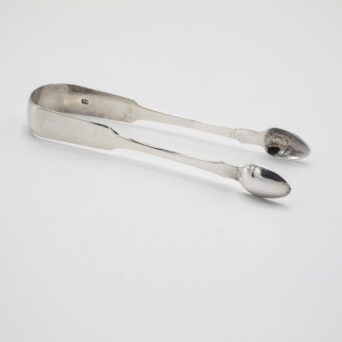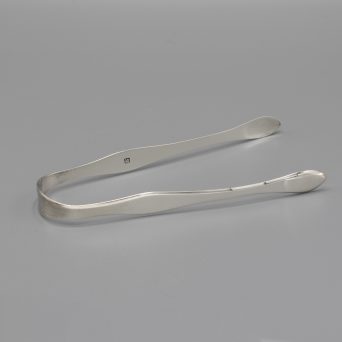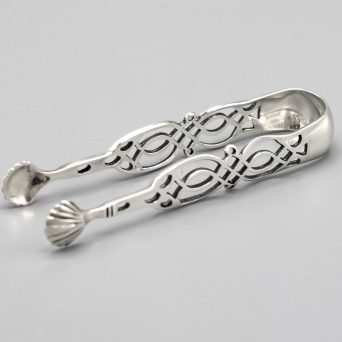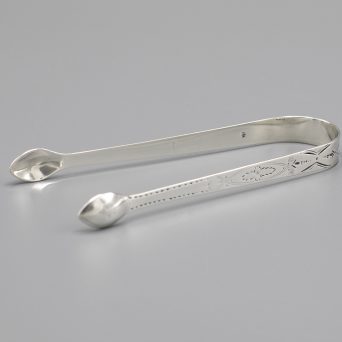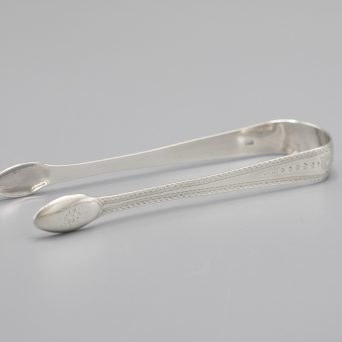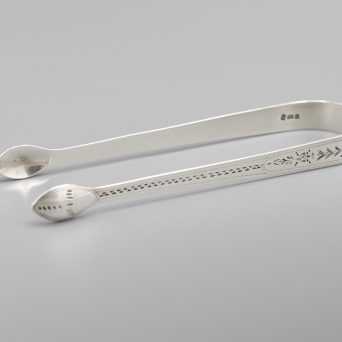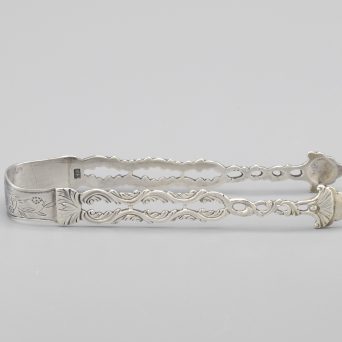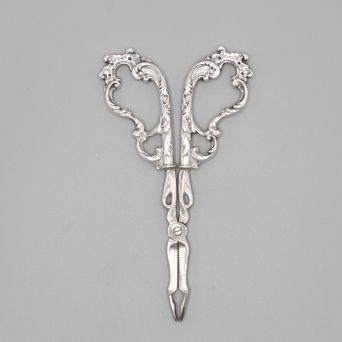Sugar Tongs, an essential part of the traditional English tea service, are used for lifting sugar cubes into tea cups. First introduced in the 17th century, sugar tongs evolved from sugar nips (designed to cut pieces off the sugarloaf) and reflected a change in traditional silver tableware which stemmed from the British Empire’s rapid economic growth. During the mid-1700s, the growth of the tea market saw a considerable rise in the purchase of sugar which was commonly used to flavor tea. Silver Sugar Tongs were developed as a practical and elegant means of picking up sugar cubes without having to use fingers.
Silver during the 17th century was generally formed into intricate and elaborate designs including decorating the dinner table. Sugar Tongs were often engraved and this practice lasted until the early 1800s. As the eighteenth century came to a close, flatware design became simplified and sugar tongs became less ornate.
It is the Bateman family who managed to dominate the Georgian period in silver sugar tongs. Not only did they establish a strong reputation during this time, but their pieces are still highly sought after today. They were probably the most prolific of all makers in London with many collections displaying their works. They also created unique and distinctive designs that are the pride of many collectors. Georgian silver sugar tong makers were consistent with the placement of their marks. These were usually found on the inside of the arms, at the top third of the piece.
